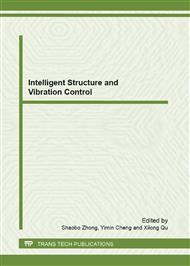[1]
Jiangrong zhong. Prediction of urban earthquake economic loss[D]. harbin: Institute of Engineering Mechanics, China Earthquake Administration, (2009).
Google Scholar
[2]
Kawashima K, Kanoh T. Evaluation of indirect economice effects caused by the 1983 Nihonkai-chubu, Japan earthquake[J]. EarthquakeSpectra, 1990, 6(4): 739-756.
DOI: 10.1193/1.1585594
Google Scholar
[3]
Shinozuka M, Chang S E. Advances in earthquake loss estimation and application to Memphis, Tennessee[J]. Earthquake Spectra, 1997, 13(4): 739-758.
DOI: 10.1193/1.1585978
Google Scholar
[4]
Gordon P, Moore J E, Richardson H W, Shinozuka M. An integrated model of bridge performance, highway networks, and the spatial metropolitan economy: towards a general model of how losses due to earthquake impactson life lines affect the economy, NCEER-97-0005[A]. Proceedings of the Workshop on Earthquake Engineering Frontiers inTransportation Facilities[C], National Center for Earthquake Engineering Research, Buffalo N.Y., Aug. 29, (1997).
Google Scholar
[5]
yuxiang huang, zongyue yang, yinghong shao. Measurement of indirect economic losses Disaster[J]. Disaster, 2004, 9(3): 7-11.
Google Scholar
[6]
haici wang. Earthquake damage assessment and mitigation of economic evaluation of investment projects[R]. shanghai: Tongji University, (2007).
Google Scholar
[7]
yifan yuan. Report on Natural disaster damage assessment[R]. harbin: Institute of Engineering Mechanics, China Earthquake Administration, (2002).
Google Scholar
[8]
qijia zou, tuo su, zhizhou ge. Socio-economic impact of the Tangshan earthquake[M]. Academic Books, (2000).
Google Scholar


